Praetorian Guard; The Elite unit of the Imperial Roman Empire
Praetorian Guard was the most important and most dangerous once most
powerful unit of the Imperial Roman Empire. Praetorian Guard was
mainly used by the emperor of the Roman empire to secure himself and
the royal family.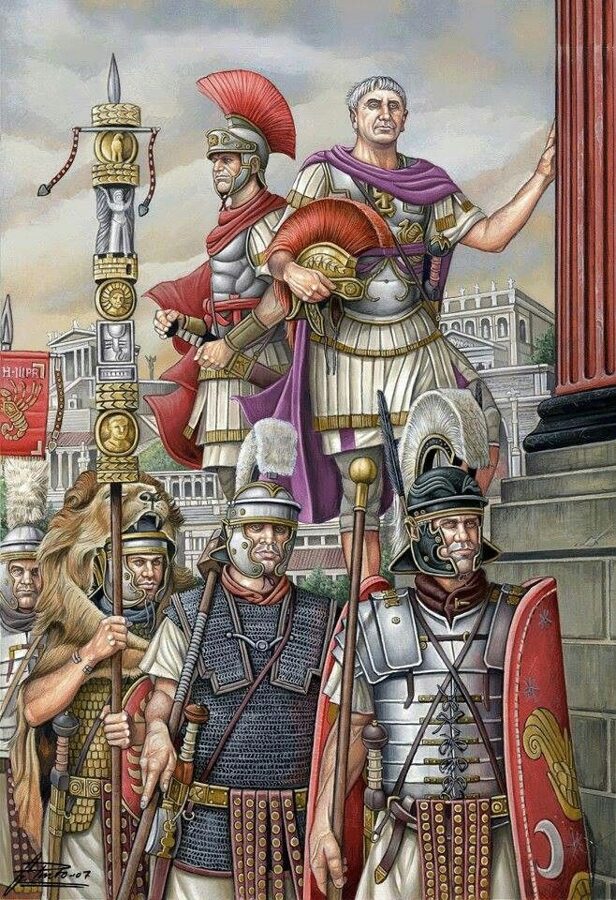 Later, several more tasks were added to it such as
protecting the empire within its walls, fighting for the empire,
fighting in the arena when necessary, especially to exhibit the power
and the strength of a Praetorian Guard, and controlling the crowd
inside Roman Walls. Apart from those, Praetorian Guard acted as the
secret police unit of the Roman Empire. They were once used as the
hitmen squad also. Loyalty towards the emperor, his family, and the
empire was the main thing expected from a Praetorian Guard when it
was created. So, it was given all the highest standards for its
existence. They dressed differently, they were armed differently,
they were given special training and they were the best the Roman
Empire ever had. But this elite unit which was established for the
sake of the empire and the emperor brought degeneration and
misfortune to the imperial roman empire until it collapsed as the
Western Roman Empire during the early centuries.
Later, several more tasks were added to it such as
protecting the empire within its walls, fighting for the empire,
fighting in the arena when necessary, especially to exhibit the power
and the strength of a Praetorian Guard, and controlling the crowd
inside Roman Walls. Apart from those, Praetorian Guard acted as the
secret police unit of the Roman Empire. They were once used as the
hitmen squad also. Loyalty towards the emperor, his family, and the
empire was the main thing expected from a Praetorian Guard when it
was created. So, it was given all the highest standards for its
existence. They dressed differently, they were armed differently,
they were given special training and they were the best the Roman
Empire ever had. But this elite unit which was established for the
sake of the empire and the emperor brought degeneration and
misfortune to the imperial roman empire until it collapsed as the
Western Roman Empire during the early centuries.
Origin of the
Praetorian Guard
The origin of the
Praetorian Guard run towards the dates of the Roman Republic. During
those days, it was not the Praetorian Guard as we know it today. It
was just an elite group made up of the greatest warriors selected
from the Roman army to protect the republic's generals. Even Marc
Antony, Scipio, Lucius Cornelius Sulla used such an elite group to
guard themselves on the battlefield as well as inside the Roman
walls. The path towards the origin of the praetorian guard was paved
by Julius Caesar when he enlisted the tenth legion (X legion) as his
security.
But the Praetorian Guard was originated by its usual name as we know it today, under the guidance of Augustus Caesar. Augustus Caesar felt and experienced the importance of a loyal and honest own army. In simply, a bodyguard unit as he experienced every harsh and rude moment of the Roman republic's civil war arose soon after the assassination of Julius Caesar. As soon as Augustus Caesar became the first emperor of the Roman Empire in 27 B.C, he created an elite bodyguard unit of nine cohorts each consisted of 500-1000 soldiers. It was the first appearance of the Praetorian Guard of the Imperial Roman Empire. It was the greatest symbol of the Imperial Roman Empire which showed all its glory and the mighty power of the emperor over 300 years. When the whole Roman Empire started its expansion with imperial military power, the Praetorian Guard always became the strongest backbone of all its victories. It made the glory and the honor towards the Golden Eagle of Rome.
Privileges of the Praetorian Guard
Since Praetorian
Guard was the empire's bodyguard unit, it was honored by a lot of
privileges. Praetorian guard soldier was enlisted to work only for 12
years while normal roman soldier had to work for 20 years in 13 BC.
But after an amendment in 5 AD, Praetorian Guard soldiers were to
work 16 years while normal roman soldiers had to work for 25 years.
Moreover, a Praetorian Guard soldier was paid three times more than a
normal legionary soldier.
Praetorian Guards
wore a uniform and armed differently than a normal legion did.
Praetorian Guards wore a blackish uniform with modified and finer
Armour including an oval shield; all other legions used the
rectangular shield. Praetorian Guard had their own identity at the battlefield, even, such as an eagle and wreath.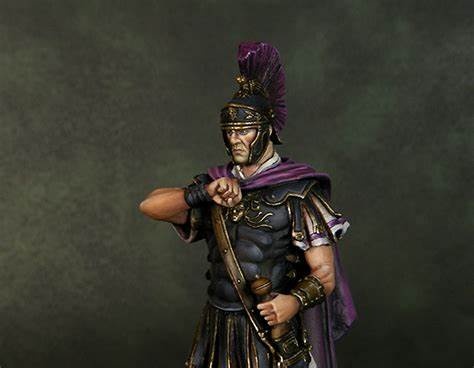
Praetorian Guard was the only allowed unit by the emperor to hold a sword near the emperor. Also, due to the short service time, Praetorian Guard soldiers could easily get a higher rank in the Roman Army at their younger ages. Moreover, after the service time, the retired praetorian guard was gifted with a house and land, even with tax immunity as ordered by the emperor.
Pride of the
empire- Brought it the disaster
From the origin of
the Praetorian Guard, it got the favor and the powers of the empire
directly. Praetorian Guard was directly commanded by the empire. It
was the sole commander in a battle once the emperor is not on the
battlefield and it was the second-highest command during the presence
of the emperor.
Even with its beginning, Praetorian Guard had got huge manpower. Apart from that they were trained well and had more connections with the emperor. They were privileged. It was the glory and the power of the Roman Empire. But as the Roman Empire started to degenerate, the Praetorian Guard with an unlimited power also became an intimate power of choosing the new emperor.
Praetorian Guard was at its worst during the reign of the Commodus. But, even before him. The praetorian guard lose its discipline and started to interfere in the ruling system directly. None was there to challenge the Praetorian guard.

The Praetorian Guard auctioned the throne of the empire to the highest bidder. Unless the emperor is loyal to them and pays them the best, the praetorian guard was with him. Later in the empire, the praetorian guard chose an empire on their own. So, the improper, indecent elite unit, once the pride and the glory of the Rome brought all the disgrace and finally the end to the Imperial Roman Empire.
Here’s a list of Emperors who were murdered by the Praetorian Guard,
Caligula in 41 AD
Commodus in 192 AD
Caracalla in 217 AD
Elagabalus in 222 AD
Pupienus and Balbinus in 238 AD
Anyway, in 312 AD, Constantine disbanded the Praetorian Guard forever and assigned all its members in normal duties under the normal law without any privilege.
The Trafalgar Square; a story lies behind it
The Trafalgar Square
The Trafalgar Square was built in memory of the victory of the British Naval fleet over the combined French-Spanish Naval Fleet on the 21st of October 1805 during the Napoleonic Wars. Trafalgar Square is located in the City of Westminster, London, England with the geographical coordinates, 51 ̊30’29” N 00 ̊ 07’41” W. This area was called Charing Cross before naming as Trafalgar Square.

Trafalgar Square hosted the King’s Mews During Edward I's reign. (Mew simply refers to the keeping of hawks for molting, the most common word is "Royal Mews"). John Nash was the first one planned to clear the Charing Cross area. This was powered under the Charing Cross Act. But Nash died shortly after constructions began. Thereafter the construction process slowed down. The name Trafalgar was suggested by the architect George Ledwell Taylor around 1835. William Wilkins also proposed a plan and the treasury also approved it. But unfortunately, Wilkins died and the plan was never put into action. The plan by Charles Barry was accepted in April 1840. The Square was opened to the public on 1st May 1844. The Nelson's Column was erected completely apart from Barry's plan. Also, it's stated the Barry was unhappy about Nelson's column. There are also statues and other sculptures built in the memory of various English war heroes and kings.

The Battle of Trafalgar
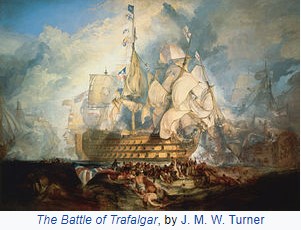
The battle of Trafalgar as taken place on 21st October 1805 in the off-cape Trafalgar, Atlantic Ocean. The battle was between the British Naval Fleet and the combined French-Spanish Naval fleets as another part of the Napoleonic wars.
The French-Spanish combined naval
fleet was commanded by Pierre Villeneuve and Federico Gravina which was sailed
from the port Cadiz in Spain. The English Naval fleet was commanded and
directed by Horatio Nelson. Nelson
directed his fleet to face the enemy fleet in the Atlantic Ocean on the South
West coast of Spain. The aim of the attack under the orders of Napoleon
Bonaparte was to defeat English naval power in the ocean and to gain the power
of the English Channel so that Napoleon's "Grande Armee" can invade
England.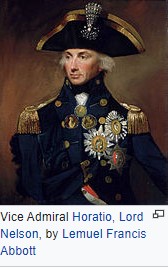
The French-Spanish combined fleet was
so strong when compared with the English fleet. French-Spanish combined fleet
consisted of 30000 men and 2568 guns to 17000 men and 2148 guns of the English
fleet. It consisted of thirty tree ships, 5 frigates, and 2 brigs while the
English fleet consisted of twenty-three ships, four frigates, one schooner, and
one cutter. During the battle English fleet commander, Lord Nelson followed an
unorthodox methodology and tactics. Unless facing the single row of enemy ships
Nelson directed his fleet as two parallel lines perpendicularly to the enemy
ship line. This action aimed to break the enemy line into three separate
fragments and to block and miss the signals given by the flagship to the
others. One of Nelson's ship lines went through the middle of the enemy ship
line while the other went through the trail end. This unorthodox and
beyond-the-tradition attack paved the way for the defeat of the French-Spanish
combined naval fleet. The casualties were recorded as 4395 deaths, 2541 wounded,
about 7500 captured soldiers, 21 ships destroyed and one ship destroyed for the
French-Spanish combined fleet while 458 deaths and 1208 wounded for the English
fleet. During the battle, Lord Nelson was shot by a French musketeer and Nelson
was died before seeing his victory. French-Spanish combined naval commander
Villeneuve was captured and with his flagship where he was released later and
committed suicide. But, Gravina was able to escape who was wounded and died
five months later.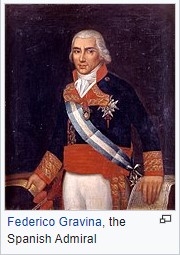
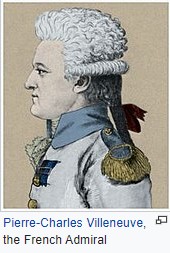
This was the largest and final naval attack directed by Napoleon against Great Britain. His navy was defeated by the Royal Navy commanded by Lord Nelson in 1798 at the Battle of Nile where his opponent, the French Fleet was commanded by Villeneuve under the order of Napoleon. After this defeat, Napoleon stopped navy combats against Britain, and instead of that, he introduced the continental system which was operated to make Britain run into trouble.
Importance of the Trafalgar Square
Trafalgar Square is the official center of London when measuring the distances from London. Also, this place is used as a place for protesting where a large crowd can gather.
References and photos
By,
https://en.wikipedia.org/wiki/Battle_of_Trafalgar
https://en.wikipedia.org/wiki/Trafalgar_Square
End of an Era; Fall of Rome
The Imperial and Pure Roman Empire at its last breathes
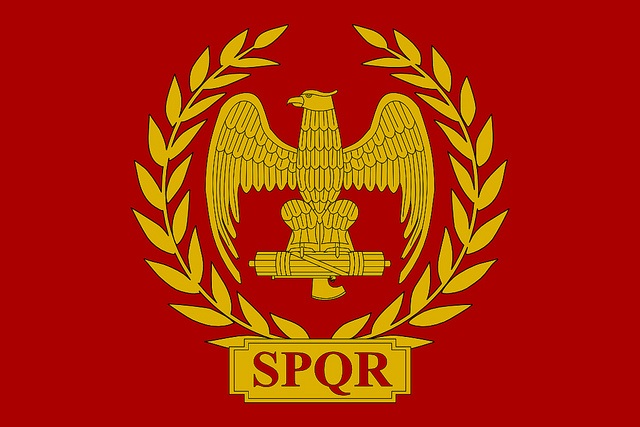
The Roman empire started to shake with the attacks directed by the Barbarians from the beginning of the 1st century. Goths, Huns, Visigoths, and several other German barbarians were powerful, and strong under the leadership of their races. Those destructive and blood-hungry barbarians were difficult to catch. They came like the wind, attacked, and disappeared like the darkness at dawn. During the 3rd century, the rising Sassanid empire gifted some terrible defeats to the Roman land armies. Also, with the increasing influence of the Barbarians, many non-roman people and barbarians started to get into the Roman kingdom in uncontrolled amounts.
Splitting of the Imperial Roman Empire
Due to the largeness of the Roman empire, it was really hard for the emperor to handle the Armies were established far east and in the Roman borders. The difficulties faced during the communications, the hesitation of the Roman commanders to obey indirect orders with the rising power, and threats of the Barbarians pulled Roman Empire in the danger more and more. Due to all these facts including the plague of Cyprian, the Roman Empire split into three; The Gallic Empire in the West (260-274), The Palmyrene Empire in the East (260-273), and The Central Roman Empire. In 274, Aurelian reunited the empire. When Diocletian came to power as the successor of Aurelian in 284, he had an imperial Roman Army as in the golden ages of Rome with about four hundred thousand men and forty-five thousand fleets. But during his reign he came up with maintaining, controlling, and ordering the Empire and its Army. So, he solved the problem by creating an adoptive succession with a Senior emperor and a Junior emperor which was called "Augustus" and "Caesar". The Roman empire was divided into two; the Western Roman Empire with the capital at Ravenna and the Eastern Roman Empire with the capital of Byzantium (later became Constantinople). The Eastern Roman Empire existed for a further thousand years more until it finally collapsed during the Crusade Wars in 1453.
The Western Roman Empire and The Eastern Roman Empire work cooperatively for some time. But later the corporation vanished. Eastern residents also had no feeling about The Roman city it was just a symbol for them about the origins of their empire. The Western Roman Empire dealt with civil wars from its beginning. But the Theodosius who controlled both the empires came up with the two civil wars successfully. But after his death, the Western Roman Empire started its break down.
The Western Roman Empire: on the way to the end
During this era, while the Western Roman Empire was struggling for their survival without a patriotic leader, Goths and Huns were rising strongly under their new kings; Attila for the Huns and Alaric for the Goths. Those well-organized barbarian forces started to attack the Western Roman Empire to acquire Rome.
Influences of Alaric on Rome
Alaric; the most powerful and the warrior of Goths worked with the only intention to siege the mighty city of Rome. In 407, Allaric reached Rome with his forces where Rome had to place their civilians and slaves in the war field to defend against Allaric.
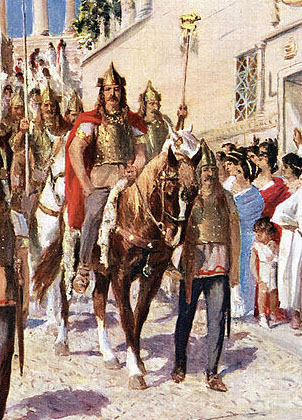
Alaric's military operations focused on the port of Rome through which Rome's grain supply had to pass. In 408, Alaric sieged Rome for the 1st time. It bought massive destruction to the property and the reputation of Rome. The 1st siege of Rome was ended after Alaric getting a huge payment from the Romans. But Rome lost most of their labor, many of their slaves as Alaric recruited them with the promise of freedom. While all those were in the play, Alaric had to deal with another enemy; Olympius, the war leader of Huns who led Hunnic mercenaries. But in 409, Olympius was beaten to death even by cutting off his ears before the death. Alaric made a puppet Augustus in Rome called "Priscus Attalus". But Alaric couldn't succeed his plans he hoped to do by his puppet emperor. So, he dethroned him a few months later. Day by day the famine became even more frightful. Historians reveal that even cannibalism was there inside the Roman walls. In 410, Alaric took Rome by starvation. It was the 1st time for Rome to be yielded after eight centuries. The Roman Empire lost its origins where the Roman civilization was born many years ago.
“At that time, they say that Emperor Honorius in Ravenna received the message from one of the eunuchs, evidently a keeper of the poultry, that Roma had perished. And he cried out and said, "And yet it has just eaten from my hands!" For he had a very large cockerel, Roma by name; and the eunuch comprehending his words said that it was the city of Roma which had perished at the hands of Alaric, and the emperor with a sigh of relief answered quickly: "But I thought that my fowl Roma had perished." So great, they say, was the folly with which this emperor was possessed.”
— Procopius, The Vandalic War (De Bellis III.2.25–26)
After the conquer of Rome Alaric moved south intending to sail to Africa. But his ships were wrecked in a storm. Shortly after this Alaric died of fever. After his death, his successor Ataulf came to power and managed the kingdom made by Alaric. He moved to the North into the The turmoil of Gaul. His supergroup of barbarians is called the "Visigoths" now. There, they started developing their sense of identity.
Destiny of the Western Roman empire
From 405-418, the western Roman empire lost its lands more. In 410, civilians in Britannia rebelled against the Roman emperor and got their freedom. Also, Rome lost parts of Hispania and Gaul.
In 421, Constantine Augustus died. He had no successor as his children were not mature enough to rule the empire. After several years, patrician Castinus installed Joannes as the Western Emperor. But the Eastern Roman government asked for child Valentinian III to be the emperor and until his maturation his mother Galla Placidia to be acted as regent. Joannes had a small troop and he sent Aetius to seek help from Huns. While Aetius was out, an Eastern army arrived and excluded Joannes and most of his officials. Three days later Aetius returned to Italy with Hunnic army which made him the most powerful General in Italy. After some fighting Placidia and Aetius had an agreement. The hunnic army was paid and sent back then while Aetius received the position “Magister Militum”, similar to the rank of the Field Marshall at present. Galla Placidia became the Augusta; the female emperor of the Western Roman Empire and was the guardian of the official emperor, her son until 437.
Flavius Aetius: the last true Roman General.
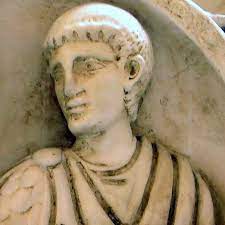
Aetius’s childhood and youth were spent as a hostage of Alaric of Visigoths and later with Huns. So, he could command and deal with those barbarian forces and even had the trust of them with him. After becoming the Magister Militum he was a leading and dominant character in the Western Roman Empire.
In 435, he was given the title of patrician and then continuously fought for the Western Empire. In 435-437, he massacred and destroyed the Burgundian kingdom at Worms.
Meanwhile, Huns were united under the leadership of Attila. Attila became the most powerful leader at the time. He fought to conquer Rome. Under his leadership, the Huns were very powerful and Hunnic forces conquered many lands around and were owned by the Western Roman empire.
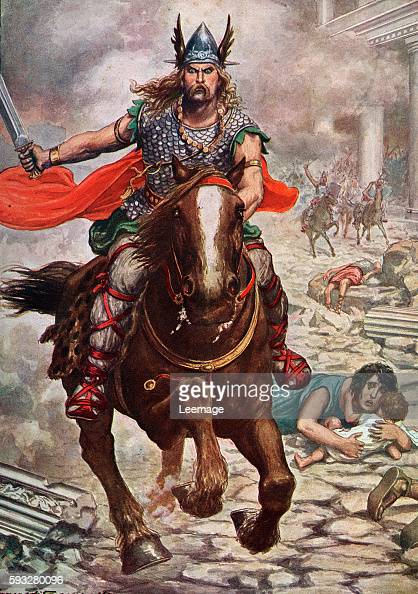
In 451, Aetius joined with Visigoths fought with Attila in the Battle of the Catalaunian Plains. It was just not sure as a victory or a defeat. Both the parties were confused with the situations and within the dusk and the darkness. Anyway, Attila gave up fighting at the end and went back. But later Attila invaded Italy and started marching towards Rome. Aetius could do just a little and was failed to stop Attila's marching. But Eastern Roman Forces attacked Attila's noncombat population in Pannonia and Pope Leo's plea for peace stopped Attila's attack on Italy. In 453, Attila died and his great kingdom split and crumbled.
A year later on September 21, 454, at the height of the success, Aetius was stabbed to death by the Western Roman Emperor, Valentinian III.
Attila the Hun
End of an Era; end of the Western Roman Empire and the Fall of Rome
With the death of Aetius, the last straw for Rome to survive vanished. Shortly after the death of Aetius, emperor Valentinian III was killed by his bodyguard.
Avitus, Ricimer, and Majorian came to the power in Italy over time. But they all failed to heal the Roman Empire and to make it on its foot. During their times also barbarian forces invade Roman conquered areas pushing Rome into trouble more and more. Eastern Roman Empire sent Anthemius for the throne of the Western Roman Empire, who was a talented General. But finally, he had trouble with Ricimer and was assassinated. Shortly after Ricimer also died.
After his death, the true patriotic leaders were over. Thereafter Western Roman Empire, which was smaller than at the time of the origin of its empire, was ruled by puppet empires elected played by Warlords.
With the end of 476, Western Roman empires were disappearing. It was scattered and no more Roman Empire existed as at its Origins. Dying empire made an organized legitimate called "Rump state" which was ruled under the Roman rule for a while after 476. Other than that, several new kingdoms arose within Italy. But the Western Roman Senate, which was powerless but influential existed in Rome under the rule of the Ostrogothic kingdom and later under the Byzantine Empire for a least another century. It was disappeared in the early 7th century finishing the final inherent of the Original Roman Empire.
Mystery of The Disappeared Roman Legion
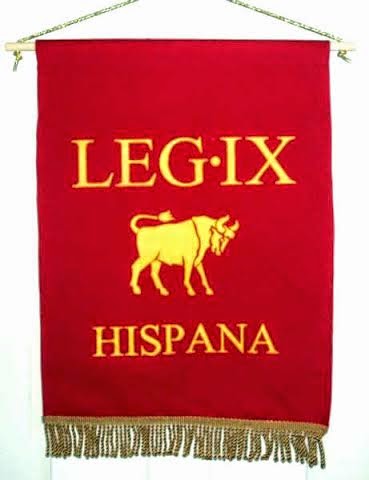
But you may amaze about hearing that there is no record about the 9th Roman Legion. It’s considered to be a vanished legion. According to the existing rare records, this legion was to be established in Roman conquered Britain. Further, it’s stated that this legion was sent to suppress a riot in Caledonia; where it’s assumed to be someplace in Scotland. The legion disappeared during that mission. What happened to it?
What historians believe today is, this Roman Legion was to be massacred by Caledonian rebels and records about this Legion were to be destroyed according to the orders of higher Roman officials. Historians further state that this action was taken by Roman higher officials to keep the dignity and integrity of their Roman legions and empire.
Caledonians attacking the 9th Legion
Anyway, after the tragic end of this proud 9th legion which was once commanded by Julius Caesar, citizens started to believe some bad luck on number 9. Over history, it was popularized number nine as a weird number.
The Nuremberg Space Battle, 1561
In the dawn of the 14th April 1561, Nuremberg residents saw an aerial battle; which is believed today to be a mass sighting of celestial phenomena. There, they have seen a large black triangular object and a large crash outside of the city. Also, they have stated there were different types of shapes all over the sky such as hundreds of cylinders, spheres, and many other shapes. Here the shapes are seen by the Nuremberg residents: objects of various shapes like crosses, black spears, and tubular objects with several smaller, round objects emerged and darted around the sky at dawn.
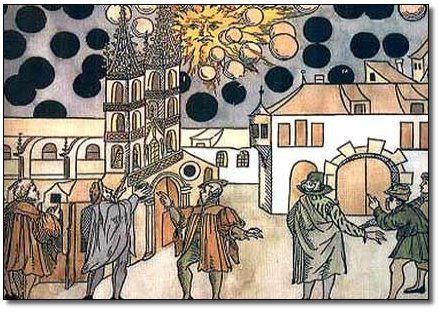
All these information has been reported and stated in a news article printed in April 1561. It was texted by Hans Glaser which was a broadsheet, illustrated with a woodcut engraving. The text of the broadsheet gives the following description. (a translated description of the original one)
"In the morning of April 14, 1561, at daybreak, between 4 and 5 a.m., a dreadful apparition occurred on the sun, and then this was seen in Nuremberg in the city, before the gates, and in the country – by many men and women. At first there appeared in the middle of the sun two blood-red semi-circular arcs, just like the moon in its last quarter. And in the sun, above and below and on both sides, the color was blood, there stood a round ball of partly dull, partly black ferrous color. Likewise, there stood on both sides and as a torus about the sun such blood-red ones and other balls in large number, about three in a line and four in a square, also some alone. In between these globes, there were visible a few blood-red crosses, between which there were blood-red strips, becoming thicker to the rear and in the front malleable like the rods of reed-grass, which were intermingled, among them two big rods, one on the right, the other to the left, and within the small and big rods there were three, also four and more globes. These all started to fight among themselves, so that the globes, which were first in the sun, flew out to the ones standing on both sides, thereafter, the globes standing outside the sun, in the small and large rods, flew into the sun. Besides, the globes flew back and forth among themselves and fought vehemently with each other for over an hour. And when the conflict in and again out of the sun was most intense, they became fatigued to such an extent that they all, as said above, fell from the sun down upon the earth 'as if they all burned' and they then wasted away on the earth with immense smoke. After all this there was something like a black spear, very long and thick, sighted; the shaft pointed to the east, the point pointed west. Whatever such signs mean, God alone knows. Although we have seen, shortly one after another, many kinds of signs on the heaven, which are sent to us by the almighty God, to bring us to repentance, we still are, unfortunately, so ungrateful that we despise such high signs and miracles of God. Or we speak of them with ridicule and discard them to the wind, in order that God may send us a frightening punishment on account of our ungratefulness. After all, the God-fearing will by no means discard these signs, but will take it to heart as a warning of their merciful Father in heaven, will mend their lives and faithfully beg God, that He may avert His wrath, including the well-deserved punishment, on us, so that we may temporarily here and perpetually there, live as his children. For it, may God grant us his help, Amen. By Hanns Glaser, letter-painter of Nurnberg." (www.wikipedia.com)
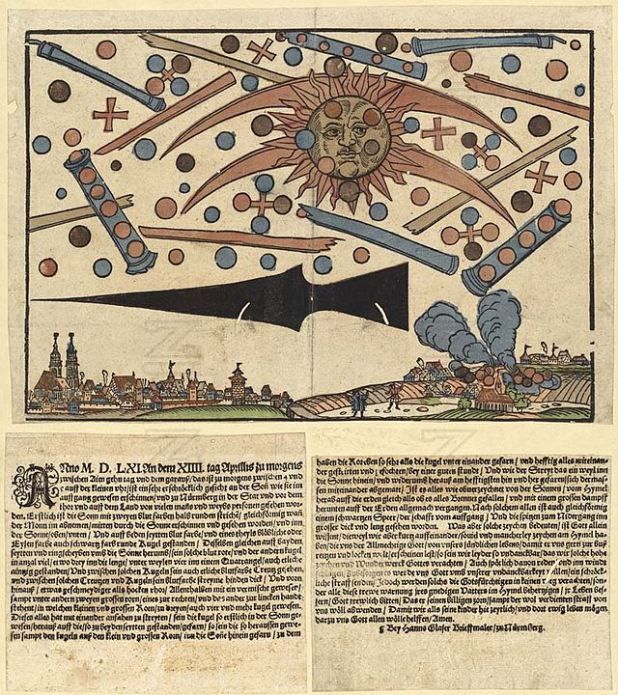
the areal battle of 1561 over Nuremberg
Real or Fake?
According to author Jason Colavito, this was popularized among the present-day community after the publication of the book Flying Sources: A Modern Myth of Things Seen in the Skies by Carl Jung. But Jung also expressed this incident as a natural phenomenon reported with a religious and military interpretation with an exaggerated description. According to Jung’s idea,
“A military interpretation would view the tubes as cannons and the spheres as cannonballs, emphasize the black spearhead at the bottom of the scene and Glaser's own testimony that the globes fought vehemently until exhausted. A religious view would emphasize the crosses.”
But when we are looking at the history several other incidents have been reported.
On Good Friday, 1554 another siege had happened
During the Thirty Years’ War (1618-1648)
On July 27-28 and August 7, 1566, another celestial phenomenon occurred in Basel, as reported in a Flugblatt (an early form of a newspaper)
References
1. ^ Frank Johnson (December 12, 2012). "Nuremburg 1561 UFO "Battle" Debunked". Ancient Aliens Debunked. Archived from the original on December 14, 2012. Retrieved January 26, 2017.
2. ^ "Himmelserscheinung über Nürnberg vom 14. April 1561". NEBIS. Retrieved July 12, 2013.
3. ^ Dennett, Preston (2008). UFOs and Aliens. Infobase Publishing Company. p. 20. ISBN 978-0791093849.
4. ^ Story, Ronald (2012). The Mammoth Encyclopedia of Extraterrestrial Encounters. Constable & Robinson. ISBN 9781780337036.
5. ^ Vallee, Jacques; Aubeck, Chris (2010). Wonders in the Sky: Unexplained Aerial Objects from Antiquity to Modern Times. Tarcher. ISBN 978-1585428205.
6. ^ Baker, Robert A.; Nickell, Joe (1992). Missing Pieces. Prometheus Books. pp. 184. ISBN 978-0879757298.
7. ^ Freer, Neil (1996). Of Heaven and Earth: Essays Presented at the First Sitchin Studies Day. Book Tree. pp. 140–141. ISBN 978-1885395177.
8. ^ Kripal, Jeffrey J. (2011). Authors of the Impossible: The Paranormal and the Sacred. Chicago: University Of Chicago Press. p. 153. ISBN 978-0226453873.
9. ^ Colman S. Von Kevicsky, "The Ufo Sighting Over Nuremberg in 1561" Official Ufo January 1976, pp. 36–38, 68. The translation is by Ilse Von Jacobi.
10. ^ Colavito, Jason (December 12, 2012). "The UFO Battle over Nuremburg [sic]". jasoncolavito.com. Retrieved July 12, 2013.
11. ^ C. G. Jung, Flying Saucers: A Modern Myth of Things Seen in the Skies Bollingen Series: Princeton University Press, 1978; Passages # 760–763 pp. 95–97.
12. ^ Otto Billig, Flying Saucers – Magic in the Skies Schenkman, 1982, pp. 48–55.
Greek and Roman Gods and Goddesses
Greek-Roman immortals are similar in their divine powers and duties. The only change is their names. Here click o this to check who the Greek and Roman immortals are different in their names.
Click here to check the names of The Immortals during the reign of these two civilizations